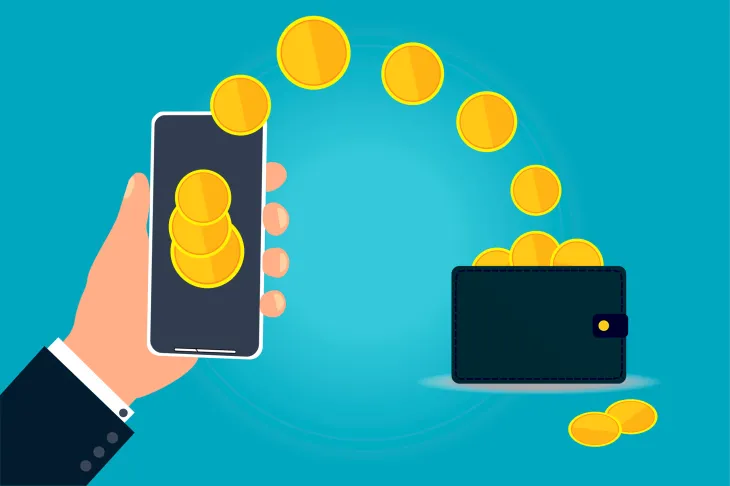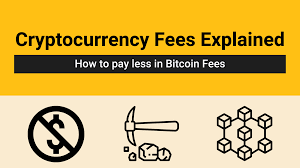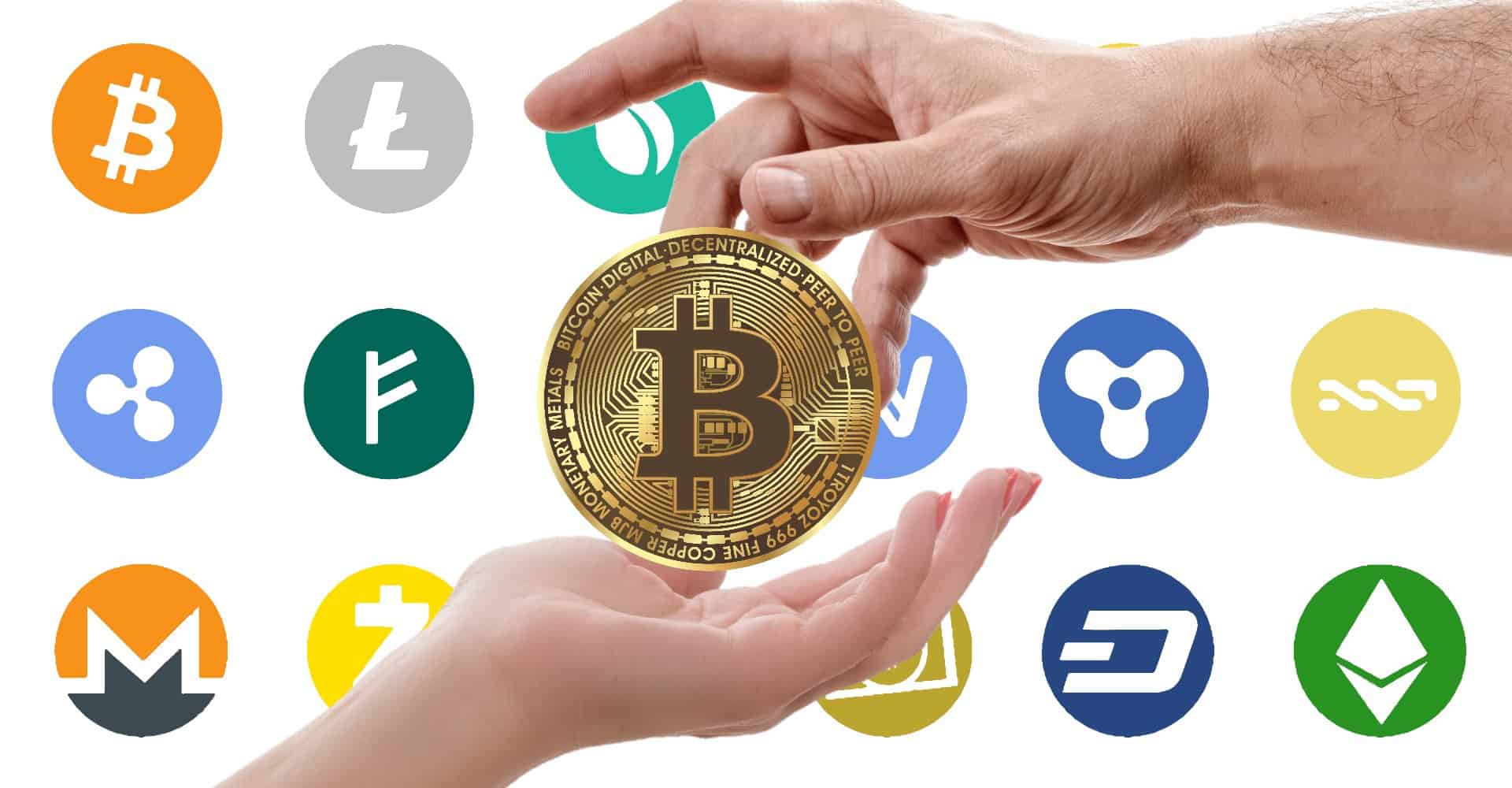Diving into the world of digital currency can feel like stepping onto another planet. With buzzwords flying and markets shifting faster than the weather, how to buy cryptocurrency for beginners might seem daunting. I’m here to cut through the noise. You don’t need a finance degree to start smart. Let’s begin unwrapping the layers of crypto buying in simple terms. From blockchain basics to your first purchase, I’ve got you covered with straightforward advice that will have you investing with confidence. Ready to turn curiosity into action? Let’s get you started on a path to savvy crypto investing.
Understanding the Basics of Cryptocurrency Investing
Choosing the Right Cryptocurrency: Bitcoin vs. Ethereum vs. Altcoins
Let’s dive into the world of digital money! You might hear a lot about buying Bitcoin and Ethereum, but there are thousands of other options, known as altcoins. Think of Bitcoin as digital gold; it’s the original and most well-known. Ethereum is like silver – not just money, but you can also run apps on it. Altcoins are like other precious metals; each one is unique.
Perhaps you’re asking, “What should I buy?” Start by researching and understanding each coin’s purpose. Bitcoin is a store of value. Ethereum powers smart contracts. Altcoins each have their own twist. They can be faster, more private, or do different things.
When buying digital currency safely, start with well-known ones like Bitcoin or Ethereum. This can be less risky than jumping right into altcoins.
Remember, every choice in your crypto journey is important. To make a smart beginning, create a crypto portfolio that suits your goals. Think about how you can mix different coins. Start with small amounts you can afford to lose. Learn from experience before going big.
What is a Blockchain? A Simple Explainer for Beginners
You might wonder, “What’s a blockchain?” Imagine a magic notebook. Whatever you write in it, everyone can see. But once you write it, no one can change it. That’s blockchain.
Blockchains hold records of all transactions made with a coin. They are public ledgers that are very secure. They make sure everything is fair and safe.
Understanding the blockchain is key to understanding cryptocurrency investment. In simple terms, it’s the tech that ensures secure cryptocurrency transactions. So, when you set up a crypto wallet, you’re actually getting a spot on the blockchain where your coins live.
For the first-time crypto buyer, grasp this: blockchain is what makes it all tick. It’s behind how to use Binance, Coinbase tutorial for newbies, and any crypto exchanges for beginners you explore.
It makes digital assets secure. Without blockchain, there would be no Bitcoin, no Ethereum, no altcoins. The trust you have when you send or receive coins? That’s thanks to blockchain.
Now, don’t worry about all the complicated stuff. Just know that the blockchain is your friend. It looks out for your coins, keeps your wallet safe, and stops scam artists in their tracks.
When thinking about a basic blockchain tutorial, remember this – it’s a system that lets us trust strangers with our money online. And that’s pretty cool.
So there you have it, a beginner’s guide to investing in crypto. Keep it simple. Understand what you’re buying and the tech behind it. And always remember, start small and think big. Good luck!
Setting Up Your Entry into the Crypto Market
Guide to Selecting a Crypto Exchange for New Investors
When starting with crypto, the first step is picking a crypto exchange. Think of it like a money shop for different currencies. You need a safe place to buy and sell coins like Bitcoin or Ethereum. Look for exchanges that are easy to use and have good support. Binance and Coinbase are two popular ones. They’re both beginner-friendly!
Start by checking if they let you use them in your country. Then, see what coins you can buy and trade. It’s important to check their fees, as this will affect how much you spend and make. Read their rules and what other people say about them. It helps you know what to expect.
Step-by-Step Tutorial on Setting Up a Crypto Wallet
After picking an exchange, you need a wallet to keep your coins safe. Here’s how to set up a crypto wallet:
- Choose between a hardware or software wallet. A hardware wallet is like a secure USB stick. A software wallet lives on your phone or computer.
- If you go for software, download a wallet app. Look up ones with high scores and good safety.
- Open your app and jot down your secret recovery phrase. Never share this! Write it on paper and keep it safe.
- Set a strong password for your wallet. Something tough to guess.
- Back up your wallet. Use your recovery phrase if the app asks for it.
- Now, transfer some crypto into your new wallet. You can do this from your exchange. You’ll send it to the wallet’s address. It’s a long string of letters and numbers.
Always double-check your address when sending or getting crypto. A wrong address can mean lost coins!
Setting up may feel tricky at first. But take your time and follow the steps. You’re making a bold move into a new kind of money. It’s okay to start slow, learn as you go, and keep your investments safe. With these steps, you’re on your way to join the digital currency world. Happy trading!
Making Your First Cryptocurrency Purchase
Buying Digital Currency Safely with Comprehensive Tips for Newbies
Jumping into buying cryptocurrency sounds thrilling, right? But slow down! Let’s ensure you start off safely. To buy digital currency safely, pick a reputable crypto exchange. Think of it like a digital marketplace for buying and selling crypto coins like Bitcoin and Ethereum. Some good ones for beginners include Coinbase and Binance. They are easy to use and secure.
Next up, set up an account. You’ll need to give some personal info and may need to show an ID. Once set up, protect your account with a strong password and two-factor authentication (2FA). This means even if someone gets your password, they can’t get into your account easily.
Now it’s time for a wallet – a digital one. A crypto wallet stores your digital cash and keeps it safe. There are many types, but as a starter, an online wallet offered by your exchange is a good choice. Just remember your wallet’s recovery phrase; it’s the key to access your crypto if you forget your password.
Finally, add money to your exchange account. You can use a bank transfer or a debit card. Now you’re ready to buy your first crypto. Start small, learn, and grow your investments over time.
Understanding Crypto Fees and Secure Transaction Practices
Ever wonder why there’s a charge every time you do something with crypto? Those are fees, and they’re part of the game. Fees can come as a surprise if you’re not ready. So let’s explain them.
When you buy or send crypto, there’s usually a fee. This pays for the network of computers that keep the crypto world running. The fee varies by exchange, by the type of transaction, and by how busy the network is.
Here are some tips:
- Always check the fee before confirming a transaction. High fees can nibble away at your funds.
- Learn the best times to transact. When the network is less busy, fees can be lower.
- Use the right type of transaction for your needs. Some need speed, some need low cost.
And one more thing – the blockchain. That’s the tech behind crypto. It makes transactions secure without the need for a middle man. Every transaction is recorded on this public ledger, block by block.
Crypto is amazing, but it comes with risks. Understand these risks and handle them with care. Learn as much as you can about secure transactions. Keep your software up to date. And always be on the lookout for scams; they’re out there to trick new folks.
Now, you’re all set. Be smart, stay safe, and start stepping into the world of cryptocurrency with confidence!
Creating and Managing Your Crypto Portfolio
Strategies for Evaluating ICOs and Cryptocurrencies
When you hear ICO, think of it as a startup’s shout out to the world. An ICO, or Initial Coin Offering, lets a new cryptocurrency or crypto project raise money. But, be careful. You must check them out right. Look for a strong team, clear goals, and real-world use. Don’t just dive in. Read their whitepaper. It tells you what their plan is.
Choosing which cryptocurrencies to buy can be tricky. Start with the big names like Bitcoin and Ethereum. These are like the big fish in our crypto sea. They have been around for a while and many people trust them. But don’t ignore the smaller ones. Some little guys could grow big too.
Remember, more isn’t always better. Start small. Learn the ropes first. Then think about diving into more coins.
Tips on Diversification and Risk Management for Beginner Investors
In crypto, putting all your cash into one coin is a no-go. Spread your bets. This is called diversification. It can help you when one of your coins isn’t doing so well. If one falls, you don’t want all your money going down with it.
So, how much to invest? Only use money you can afford to lose. Crypto prices can jump around a lot. We call this volatility. If you’re okay with some ups and downs, great. But don’t use the money you need for rent or food. That’s risky.
Now, keep track of your coins. Use an app or a spreadsheet. Watch how they’re doing. If one is always down, it might be time to switch.
Managing risks means knowing when to say bye to a coin. Don’t hold on just because you don’t want to lose. Sometimes, cutting a loss early is smart.
And protect your coins. Use a safe wallet. Make sure your recovery phrase is somewhere safe. This phrase is like the key to your coin kingdom. Lose it, and you could be locked out forever.
To sum it up, start with knowing what you’re buying. Spread your bets over different coins. Only invest what you can lose. Keep an eye on your investments. And protect your digital cash like a treasure. With these steps, you’re on your way to smart investing in the crypto world. And remember, always stay on the lookout to avoid scams.
In this post, I’ve walked you through the key steps to start investing in cryptocurrency, from understanding the basics to making your first purchase. We looked at how to pick the right digital coins, broke down what blockchain is, and even detailed how to select an exchange and set up your wallet. Then, I showed you how to buy crypto safely and manage the costs. Finally, we dove into creating a diverse portfolio and managing risks with smart strategies.
To sum it up, jumping into crypto requires careful planning, but it doesn’t have to be tough. With the knowledge from this guide, you’re set to start. Always remember to learn as you go and never invest more than you can afford to lose. Happy investing!
Q&A :
What steps should a beginner take to purchase cryptocurrency?
Purchasing cryptocurrencies can seem daunting, but by breaking it down into a few key steps, beginners can start their investment journey with confidence. Starting with a basic understanding of what cryptocurrency is and then moving on to compare different platforms, choosing a secure wallet, verifying their identity, and finally making the transaction are essential steps to ensure a smooth buying experience.
How can beginners choose the right cryptocurrency to invest in?
For beginners, the cryptocurrency market can be overwhelming. To make an informed decision, novices should consider factors such as the longevity, market capitalization, and the technological infrastructure of the cryptocurrency they are interested in. Researching and learning about the purpose of different cryptocurrencies and following industry news for trends can help in choosing the right one.
What are the safest platforms for a beginner to buy cryptocurrencies?
Security is a top priority when selecting a platform to buy cryptocurrencies. Beginners should look for platforms with robust security measures, such as two-factor authentication, insurance policies to protect digital assets, and a reputation for reliable customer service. Reviews and community forums can offer insights into user experiences with various exchanges.
Is it necessary to buy a whole cryptocurrency unit, or can beginners buy fractions?
Cryptocurrencies are divisible, and most platforms allow the purchase of fractional shares. This means beginners don’t need to invest in a whole unit of a cryptocurrency, which can be quite expensive; instead, they can invest an amount of money they are comfortable with, buying a part of a cryptocurrency known as ‘satoshis’ in Bitcoin’s case.
What precautions should beginners take when buying cryptocurrency?
Beginners should adhere to several precautions to ensure their investment is secure. Staying educated about the cryptocurrency environment, using a secure and private Wi-Fi connection, choosing a reputable exchange, setting strong passwords, and using a hardware wallet for large investments are just some of the steps that can enhance the security of their transactions and digital assets.




